Golf R Could Be Named ‘Golf RRRRRR’
By John Gilbert
Volkswagen is a difficult target to follow these days, coming out with new vehicles and new engines that give the German automaker a definite step up from most competitors. One seemingly dizzying move is the announcement that Volkswagen will keep selling the Jetta compact, and the Passat, its new Arteon luxury midsize sedan, as well as its wagons and SUVs, but it will stop sending its iconic Golf hatchback to the United States.
Well, almost. The spectacular Golf R that I recently tested for a week along the North Shore of Lake Superior is unquestionably based on the Golf, and thankfully, it will keep coming to U.S. showrooms, along with the GTI. But the base Golfs will be made for sale elsewhere only.
To Volkswagen, it’s not a puzzle. The Golf outsells the Jetta in every country of the world where both are sold, except the U.S. Our buyers became convinced they didn’t want small hatchbacks anymore, and we buy many more Jettas than Golfs, so the Golf is simply being eliminated from our future.
The asterisk is that Volkswagen has allowed it will bring in two specialty Golf models, the GTI and the Golf R. That, too, makes economic sense because the high-performance GTI and the even higher-performance Golf R account for something like 46 percent of all Golf sales in the U.S.
Despite the opportunity to be blown away by my week-long road test of a new 2019 Golf R in a new slate-grey color, I am disappointed to hear of the decision on the other Golfs. The GTI is, of course, the icon of all “hot hatches” and outruns the standard Golf with ease, but the basic Golf now comes with VW’s 1.4-liter turbo four-cylinder engine that is part of a new and different engine family than the 2.0 or 1.8 fours.
The 1.4 turbo powers the Jetta, and it only recently has migrated into the base Golf as well. I wrote about testing a base 1.4-turbo Golf in minus-30-degree January weather this past winter. It has plenty of power with the turbo and can push out amazing amounts of torque, and despite what the big-time magazines such as Motor Trend or Car & Driver say about needing more power and faster acceleration from everything they test, the 1.4 has at least adequate in performance, and is a fun way to achieve 40-plus miles per gallon.
But I digress.
The GTI set the standard for fun and high-performance handling and power and has maintained that stature since the 1970s. Volkswagen kept making subtle refinements without ever losing the flat handling and solid performance in the tweaked front-wheel-drive GTI hatchback. It was distinctive in autocross competition and road-racing for hoisting its inside rear wheel in a tight turn, evidence of how stiff the platform was.
Suggesting improvements for the GTI seemed like heresy, but VW has done it, with an under-publicized, under-rated and mostly under-appreciated Golf R. The 2019 Golf R shares the 2.0-liter dual-overhead cam four with the GTI, but it gets a power tweak in the R, up to 292 horsepower and 280 foot -pounds of torque.
That power is distributed to all four wheels in VW’s 4-Motion concept, and a 6-speed stick helps make the 4-door (only) hatchback stick. There will be no rear-wheel lifting in this one. It is too well-planted with the power going to all four wheels, and it is not likely you will ever screech the tires taking off, even if you try to. And why would you?
The test vehicle comes in at a bit over $43,000, and if that seems like a lot for a Golf, consider that it will go through anything, and handle with the same agile stability as the GTI, only better. And it should make the hillside-scaling in Duluth winters a joy rather than treacherous.
The 4-door form does nothing to lessen the sportiness of the R from the traditional 2-door coupe. and it adds convenience to rear occupants. First impression was stunning, because the color is a unique slate gray, which is flat compared to the various high-metallic shades of grey everybody seems to favor. Various other companies including Toyota and Honda also have recently tried a flat grey and it’s always eye-catching.
This one stands out because its distinctive color was set off by a set of black, 19-inch alloy wheels, making the high-performance Continental ContiSport Contact tires look like part of the wheels, and the all-black tire-wheel combination contrasts sharply and amplifies the car color. A tiny silver “R” adorns the grille, and any other special package indications are scarce, except for the four exhaust tailpipes that at least let you know that something special just blew by you.
I was able to get up and over 30-miles per gallon with the R when driving it conservatively, but it is a chore to resist running the revs up in second and third gears, which put you right up there in risk territory for any speed limit. Those revs rise steadily and smoothly, which also describes the way the Golf R handles the tightest turns, turning cloverleafs into highlights and making you wish for a chicane or two on your nearest interstate system.
The highlight of the auto industry ad business these days is the compelling new prime-time Volkswagen commercial, set to the “Sound of Silence” classic by Simon and Garfunkel. Great song, and a fantastic ad, because it shows an engineer getting up in the dark of night to walk through the darkened house to his design bench, where he’s drawing up a stunning new version of the Microbus — VW’s stodgy but lovable Woodstock-era van from the 1960s.
Only there’s nothing stodgy about the new van, with its dramatic snub-nosed styling, only hinted at in the commercial. Reviewers have claimed that the ad shows that Volkswagen is still trying to apologize for the diesel scandal of the past decade, whereby software in Volkswagen diesels ingeniously restricted emissions when being tested, but violated standards when running free.
We must always add the footnote that virtually every other company on the face of the earth that builds a diesel engine also has had similar problems, although they have been kept much quieter, suspiciously allowing General Motors, Ford, FCA, Mercedes and others to stay safely below the “scandal” threshold stamped on Volkswagen. Most of those are larger trucks, and the high-mileage Golf TDIs were so plentiful that the company has pretty much stopped building diesels — at least for the U.S.
There have been enough apologies, and hefty fines, and VW has proven capable of building a whole new fleet of exceptional cars with small, turbocharged gas engines. To criticize the critics, there are other reasons that ad is a clever look into the future. The opening line, “Hello darkness, my old friend,” fits the nighttime theme, and the closing line, which reiterates the phrase “…the sound, of silence,” as we are shown an outline of the new VW “bus” head-on. Hmmm…let’s see now. What is silent while running, but shines brightly in the night? How about an all-electric vehicle?
Car folks might know far better than ad critics that the new version of the Microbus shown at all the major car shows for two years now, and coming soon, will be all-electric. And thus it becomes an old friend reborning, and running silently.
Meantime, Volkswagen is putting the finishing touches on its all-electric Golf, called the e-Golf, which will definitely prove that VW is headed down the cleanest of clean-air paths. It will be silent, it won’t require any gasoline, and it may lead the way, along with the Microbus, for an entire new direction for VW.
But pardon me if I engage in a little pre-nostalgia: Give us your best electric-motor technology, give us that Microbus, but please, don’t take away our Golf R!


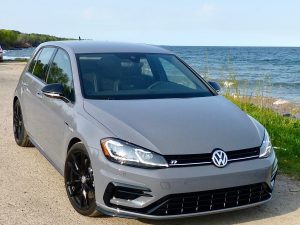
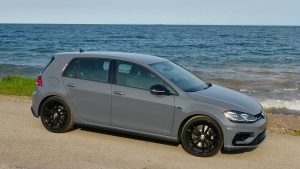
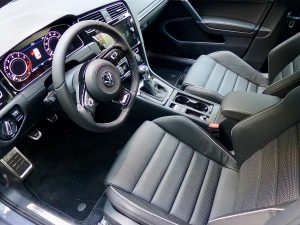
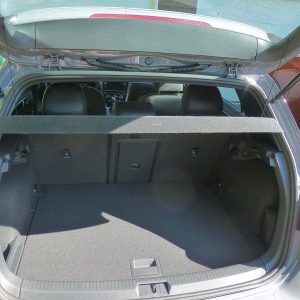
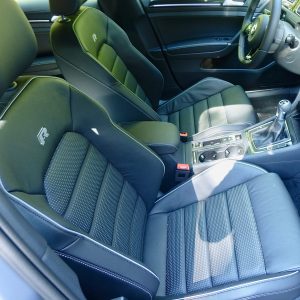

 John Gilbert is a lifetime Minnesotan and career journalist, specializing in cars and sports during and since spending 30 years at the Minneapolis Tribune, now the Star Tribune. More recently, he has continued translating the high-tech world of autos and sharing his passionate insights as a freelance writer/photographer/broadcaster. A member of the prestigious North American Car and Truck of the Year jury since 1993. John can be heard Monday-Friday from 9-11am on 610 KDAL(www.kdal610.com) on the "John Gilbert Show," and writes a column in the Duluth Reader.
John Gilbert is a lifetime Minnesotan and career journalist, specializing in cars and sports during and since spending 30 years at the Minneapolis Tribune, now the Star Tribune. More recently, he has continued translating the high-tech world of autos and sharing his passionate insights as a freelance writer/photographer/broadcaster. A member of the prestigious North American Car and Truck of the Year jury since 1993. John can be heard Monday-Friday from 9-11am on 610 KDAL(www.kdal610.com) on the "John Gilbert Show," and writes a column in the Duluth Reader.